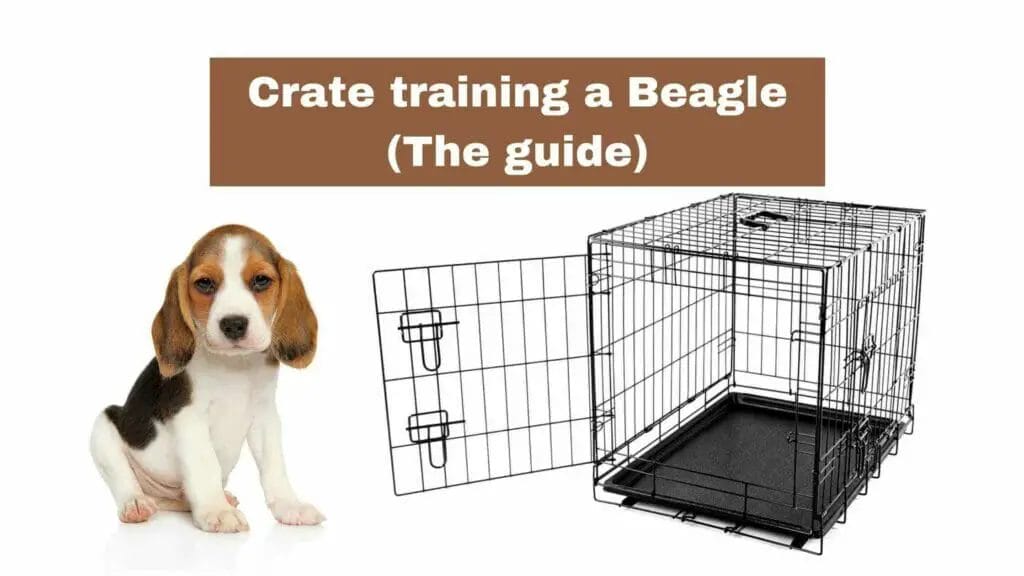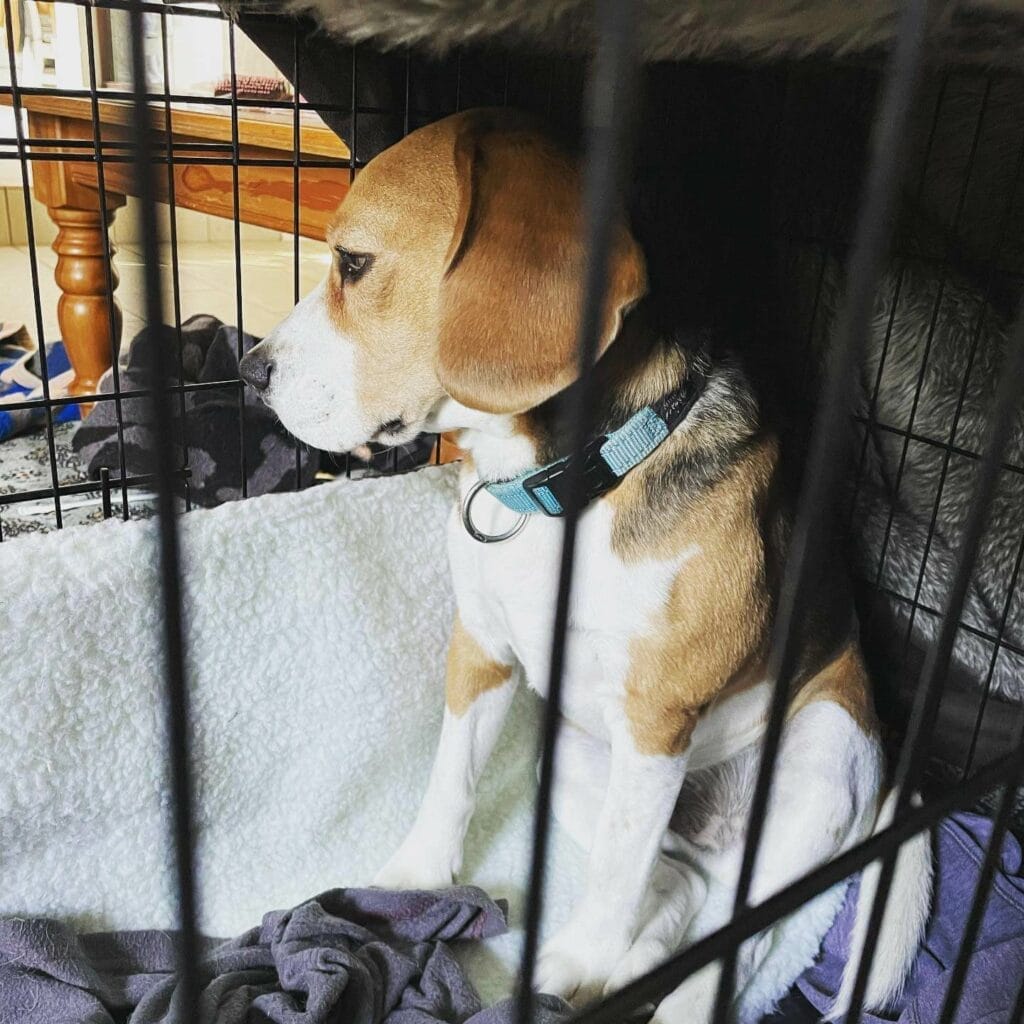
Crate training is an important part of raising a well-behaved and happy pup. It gives your beagle a safe space to retreat to when they need some alone time or when you need them to stay out of trouble. But crate training can be tricky, especially with the independent and stubborn nature of beagles. In this article, we’ll discuss the ins and outs of crate training a beagle so that you can give your pup the best possible start in life.
Key takeaways:
- Crate training is an important part of raising a well-behaved and happy pup.
- It’s perfectly fine to crate-train a beagle, and it helps keep them safe while you are asleep.
- Beagles can be difficult to crate train due to their independent nature, but with patience and consistency, it is possible.
- It’s best to start crate training as soon as possible after bringing your new puppy home.
- Crate training provides your pup with their own secure space where they can feel safe and comfortable; helps keep them out of trouble; teaches them independence; allows for easier travel; and keeps everyone in the house safer during times when supervision isn’t available (such as overnight).
- The best size dog crate for a beagle should be big enough for them to stand up fully without hitting their head on top and turn around easily without feeling cramped.
- Alternatives to crates include using baby gates/playpens instead, which allow more freedom of movement while still keeping pups contained within certain areas, or using tethering systems which attach leashes directly onto furniture so pups cannot wander off too far away from owners.
Is it OK to Crate a Beagle?
Yes, it is perfectly fine to crate-train a beagle. In fact, many experts recommend crate training as it provides your pup with their own secure space where they can feel safe and comfortable. This helps them learn that their crate is their own special place and not somewhere they should fear being sent away to for punishment.
Is Crating a Beagle at Night Cruel?
No, crating your beagle at night is not cruel if done correctly. As long as you provide your pup with enough room to move around comfortably and access to food, water, and toys, crating them at night is perfectly acceptable. It also helps keep them safe from any potential dangers while you are asleep.
Are Beagles Hard To Crate Train?
Beagles can sometimes be difficult to crate train due to their independent nature, but with patience and consistency, it is possible! The key is to make sure that you create positive associations with the crate by providing treats or toys whenever they go inside voluntarily or remain in the crate quietly for extended periods of time. This will help teach them that good things happen when they are in the crate, which will make them more likely to go inside willingly in the future.
When To Start Crate Training A Beagle Puppy?
It’s best to start crate training as soon as possible after bringing your new puppy home so that they can get used to their new environment quickly. Start by introducing them slowly by placing treats inside the crate or allowing them access for short periods of time throughout the day until they become comfortable going inside on their own accord.
Is It Hard To Crate Train Beagle Puppies?
No, it isn’t hard to crate-train beagle puppies if you take your time and use positive reinforcement techniques such as treats or praise whenever they do something right while in the crate. Just remember that consistency is key when it comes to teaching any new behavior, so make sure that you stick with it even if progress seems slow at first!

Pros And Cons Of Crea Training A Beagle
Pros: Crate training provides your pup with their own secure space where they can feel safe and comfortable; helps keep them out of trouble; teaches them independence; allows for easier travel; keeps everyone in the house safer during times when supervision isn’t available (such as overnight).
Cons: Can take longer than other breeds due to their independent nature; may cause anxiety if not done correctly; requires patience and consistency from owners; may require additional accessories such as bedding or toys depending on how long they will need to stay in there at any given time; may require additional potty breaks if kept in there for too long without access outside.
Crate Training a Beagle Step By Step
- Choose the right crate for your pup. Make sure it’s big enough for them to move around comfortably but not so big that they can wander off and get into trouble.
- Create a positive environment in the crate by adding comfortable bedding and toys that will keep your pup entertained while inside.
- Establish a positive association with the crate by giving treats or praise when your pup enters it voluntarily.
- Start with short periods of time in the crate, gradually increasing the amount of time spent there until they become comfortable with it.
- Don’t leave them alone in the crate for too long – puppies need regular breaks from confinement and should never be left alone for more than a few hours at a time during their first few months of life.
- Make sure you take your pup outside regularly for potty breaks – this will help them learn where it’s appropriate to go to the bathroom and avoid accidents inside the house or crate.
- Finally, be patient! Crate training takes time, but if done correctly it can be an effective way to teach your pup good habits and keep them safe when you’re not around.
How Long Can A Beagle Stay In A Crate?
This depends on several factors such as age, size, activity level, etc., but generally speaking, most adult dogs should only stay in crates for up 4-6 hours at a time during daytime hours (longer periods are okay overnight). Puppies should not stay in crates for more than 2-3 hours at a time during daytime hours (longer periods are okay overnight).
Best Size Of Dog Crate For A Beagle?
When choosing a dog crate for your beagle puppy or adult dog, make sure that it is big enough for them to stand up fully without hitting their head on top and turn around easily without feeling cramped – this will ensure that they have plenty of room while still feeling secure inside their den-like environment!
Where To Place A Beagle’s Crate?
The best place for your Beagles’ crate would depend on several factors, such as how much noise/activity there is around it (for example, near busy areas like kitchens might not work well), whether or not there are other pets around who could potentially bother/distract him/her while trying to rest/sleep, etc., but generally speaking somewhere quiet yet accessible like bedrooms or living rooms would work best!
Alternatives To Crate Training
If you don’t want/can’t use crates, then there are still ways that you can teach your pup good behaviors without having one – these include using baby gates/playpens instead, which allow more freedom of movement while still keeping pups contained within certain areas; using tethering systems which attach leashes directly onto furniture so pups cannot wander off too far away from owners, etc., all these methods work just as well if done correctly!
Conclusion
Crate training can seem daunting, but with patience and consistency, it doesn’t have too! Remember that creating positive associations between pups and crates will help immensely – offer treats/praise whenever pups enter willingly or remain quiet inside – this will help build trust between both parties quickly, making learning much easier! Also, remember that alternatives exist, too, so don’t worry if crates aren’t an option – baby gates/playpens & tethering systems work just as well! Good luck & happy training!
